Manga is the Japanese word for comics, literally meaning
“whimsical drawings”. If you have a favorite anime, chances are it was spawned
from a comic of the same title. Reading them requires some adjustment, though. Since Japanese is read from right to left, you
read manga the same way – from back to front. If that doesn’t make your head
explode, here are some of the best places to start.
Bleach
by
Tite Kubo
Original
run:
2001 - ongoing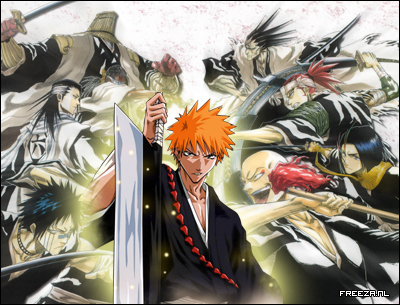
What
is it?: Ichigo Kurosaki is a High School kid that has always been
able to see spirits. When a Shinigami (Death God) gets injured protecting his
family from an evil spirit known as a Hollow, the young Kurosaki becomes a
substitute Shinigami and is entrusted with protecting his town from the threat
of Hollows. That was 450 chapters ago. Add in an entire Soul Society of
Shinigami, Hollow hybrids and a conspiracy centuries in the making and you
start to see the scope of this series.
Why
it’s good: Strong
story. This thing will suck you in. What starts as a simple
story about a guy fighting some evil spirits turns into an incredibly layered
and engrossing spiritual opera. Typical clichés of the genre are avoided when
they can be, making for a very surprising and refreshing take on some of the
more standard manga plots.
Why
it’s meh: Way
too many faces. Once the meat of the story unfolds, the
comic juggles upwards of 40 different characters, and then essentially doubles
that later. To be fair, Kubo does a decent job of giving them all a unique
personality. It’s still a daunting task to keep track of all the players in
this one.
American
comparisons: While Dragon
Ball Z originates from Japan, it’s been part of American culture for long
enough to compare. The plot structure is very similar, and like Goku, Ichigo
and co. must fight their way through seemingly insurmountable enemies. No wish
granting dragons here, though.
Death
Note by Tsugumi Ohba and Takeshi Obata
Original
run:
2003 - 2006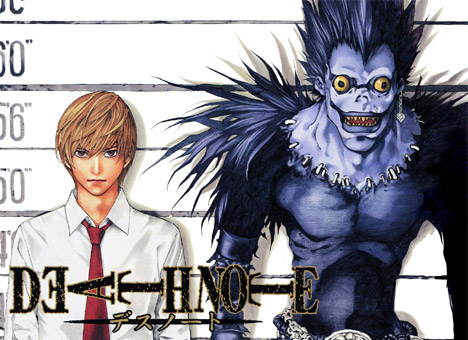
What
is it?: Young genius Light Yagami resents crime and injustice in
all forms. When he finds a discarded Death Note – the tool used by Shinigami
(yes, more death gods) – he also finds a way to create his own utopia free of
crime. The device comes with simple instructions: The human whose name is
written in this note shall die. After he tests it on a convict on death row,
Light adopts the alias of Kira, and begins his work with the original owner of
the Death Note, the shinigami Ryuk, observing out of simple curiosity. What
begins is a Sherlockian battle of wits between Kira and L, a nameless detective
prodigy. What is Light to do? Maybe join the very investigation that’s trying
to bring down Kira himself.
Why
it’s good: The
first half. Out of all the manga I have read, the first
half of Death Note is nearly
flawless. The pace never slows, with epic sword battles being replaced with
battles of intellect. How writer Tsugumi Ohba is able to make a comic devoid of
action so thrilling is something that should be praised. The protagonist is
essentially the villain of the story – think Dexter, only supernatural and on a massive scale. You can’t help
but root for Dexter, but Kira, not so much. While Dexter may kill one person an
episode, Kira writes hundreds of names in that book of his.
Why
it’s meh: The
second half. While the first half of the series was “cat
and mouse” at its finest, the second half takes it to the extreme. When Kira
acts, his nemesis anticipates the act and acts accordingly, but Kira knew he
would anticipate his act and he acts on his own anticipation, though his
nemesis in turn knew he would know that he knew that he anticipated – this goes
on for a while and it’s really tiring.
American
comparisons: As I mentioned, it’s essentially Dexter only with Death Gods and
supernatural note books. Light even joins the investigation against him,
similar to his Showtime counterpart.
One
Piece by Eiichiro Oda
Original
run:
1997 - ongoing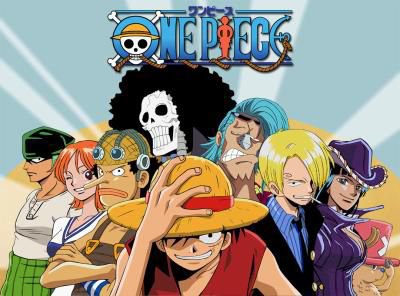
What
is it?: Monkey D. Luffy has always dreamed of being the captain
of his very own pirate crew. After eating the Gum Gum Devil Fruit, Luffy gained
elastic powers akin to those of Reed Richards. Upon hearing of the legendary
treasure known as the One Piece, Luffy sets out to gather a crew and head for
the Grand Line – the rumored resting place of the fabled treasure. To get a
feel of the comic, his crew includes but is not limited to a womanizing chef
that only fights with his feet so he can save his hands for cooking, an
anthropomorphic reindeer who also happens to be a doctor, a swordsman who uses
three blades (one in each hand and the other in his mouth), and a skeleton
musician. This thing is crazy weird.
Why
it’s good: It’s
the best-selling manga of all time – it has to be doing something right. This
comic essentially has everything: great story, well developed characters, huge
scope and scale, and insane battles. The characters are really where this manga
nails it, though. Each crew member has a well fleshed out backstory, and some
of the best in manga – especially Robin’s past (prepare to cry).
Why
it’s meh: WTF?
This series is incredibly goofy. While its serious moments are great, it’s
really the slapstick that makes this manga what it is. It doesn’t always irritate,
but sometimes the off-the-wall antics of the characters can be a little much.
Still, this series comes with a huge recommendation.
American
comparisons: Think Pirates
of the Caribbean meets Spongebob
Squarepants. Seriously.
Negima!
by
Ken Akamatsu
Original
run:
2003 - ongoing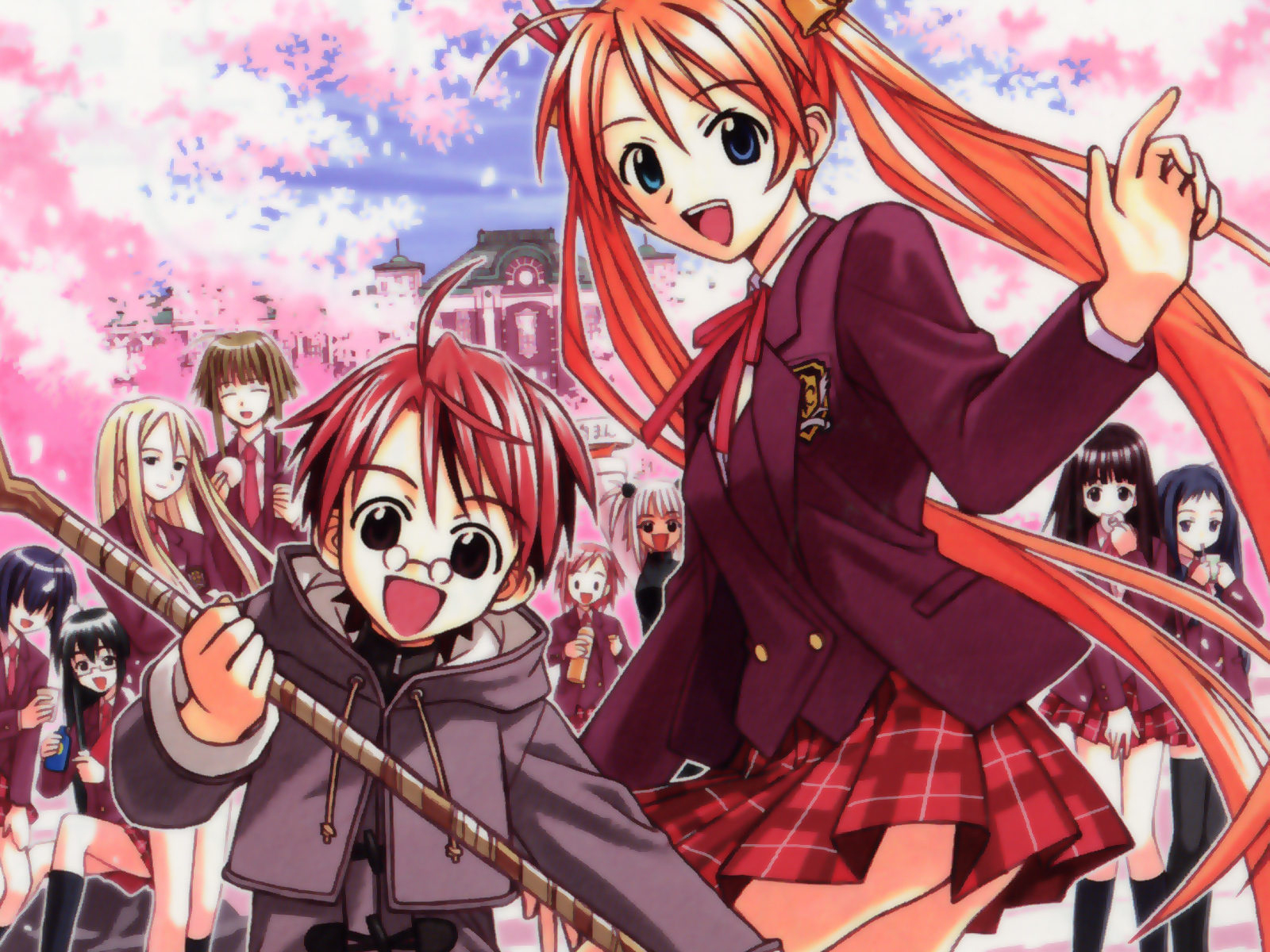
What
is it?: Ten-year-old Negi Springfield is a wizard from Wales who’s
on his way to becoming a Magister Magi. After graduating from Merdiana Magic
Academy, Negi is assigned a task in order to complete his magic training. His assignment
is to teach English at an all-girls high school in Japan. As you can imagine,
awkwardness ensues, with all the girls crushing on the young British teacher.
Soon, some of the girls become privy to Negi’s abilities as a magician,
including the tomboyish Asuna, and when danger reaches the school these girls
form magical pacts with Negi and gain powers of their own. If that doesn’t
catch your interest, clothes get blasted off on a nearly chapter by chapter
basis.
Why
it’s good: Great
characters. If you’ve read Akamatsu’s other award winning manga Love Hina, you already have an idea of
the structure of this one. It’s definitely a harem comedy, but since the
protagonist is a ten-year-old, it’s incredibly innocent. Even though there are
a lot of girls in the class, each one is unique and distinguishable, with the
most memorable becoming story leads themselves. Once the story is established,
the stakes and scope of the story increase dramatically, so if it doesn’t grab
you immediately, give it a little time.
Why
it’s meh: Fan service
overload. This may not sound like a bad thing, and it really isn’t.
Most of the time, the fan service is hilariously inputted. For example, every
time Negi sneezes, everyone’s clothes in a twenty foot radius get blown off. It
may sound stupid, and it is, but it fits the tone perfectly. This may sound exclusively
like a guy’s comic, but it would definitely appeal to girls. But, if this kind
of thing is a deal breaker for you, this may be one to avoid – at least in the
beginning. The fan service definitely takes a backseat once the meat of the
story unfolds.
American
comparisons: If Hogwarts was filled with Japanese school
girls, it would be close to Negima!.
Soul
Eater by Atsushi Okubo
Original
run:
2003 - ongoing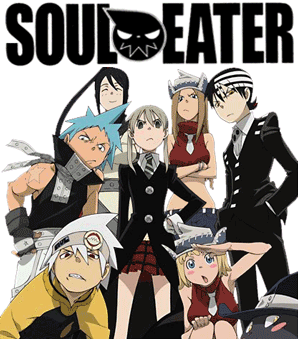
What
is it?: Death Weapon Meister Academy located in Death City, Nevada
is where young weapon meisters learn to control their weapons in order for them
to become Death Scythes to be wielded by Death himself and Headmaster of the
school, Shinigami (Yes, more shinigami). In order for the weapon to become a
Death Scythe, it must ingest 99 human souls and one soul of a witch. The comic
opens with Young meister Maka Albarn and her scythe Soul just one witch soul
away from incredible power. But, this is the beginning of the story, I wonder
if something is going to go wrong that will prevent that (something totally
does go wrong).
Why
it’s good: Style. Soul Eater has an incredibly strong and
unique style to it, especially its art. The sun and moon have twisted faces of
their own, and the weapons themselves take the form of humans and have distinct
personalities. It’s incredibly weird – like Tim Burton on acid – but it’s a lot
of fun.
Why
it’s meh: Style.
There’s another side to its strongest asset. If you’re new to manga or anime in
general, this probably won’t convert anyone wary of venturing into the medium.
Like One Piece, it’s pretty out
there. Read the section above, and if it sounds a little too weird to handle,
you’re probably right.
American
comparisons: You’ve got me.
Did I overlook your favorite? Does one of these really
suck? Let me know over in the forums.